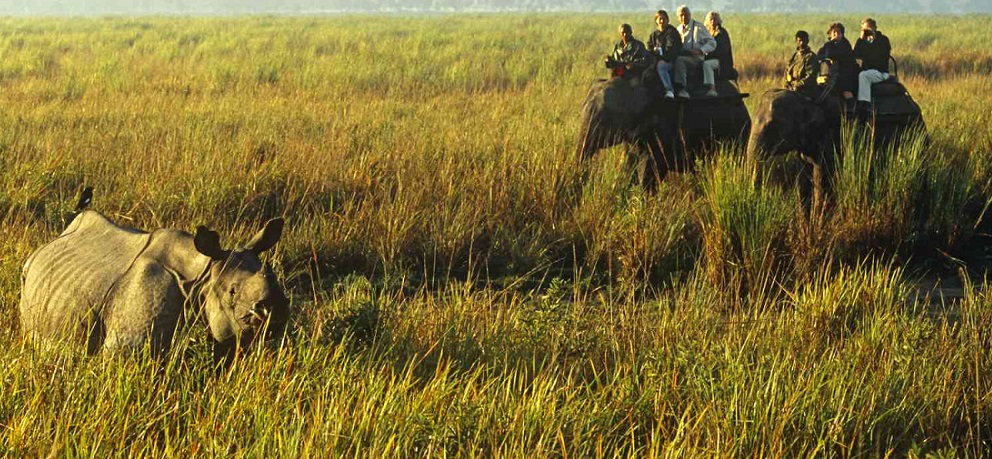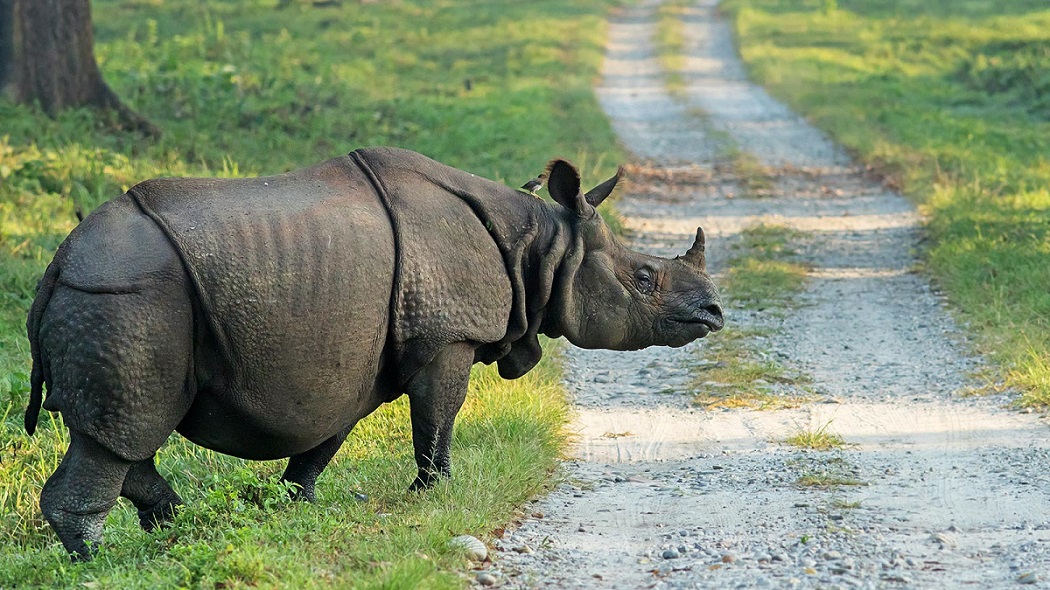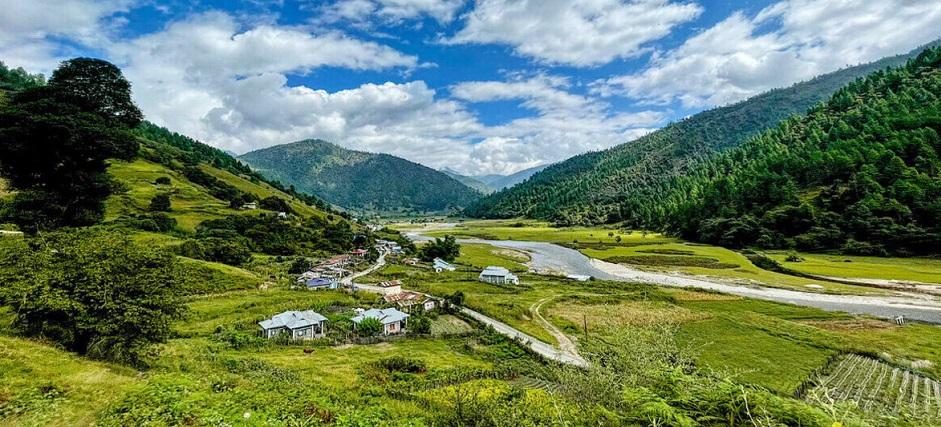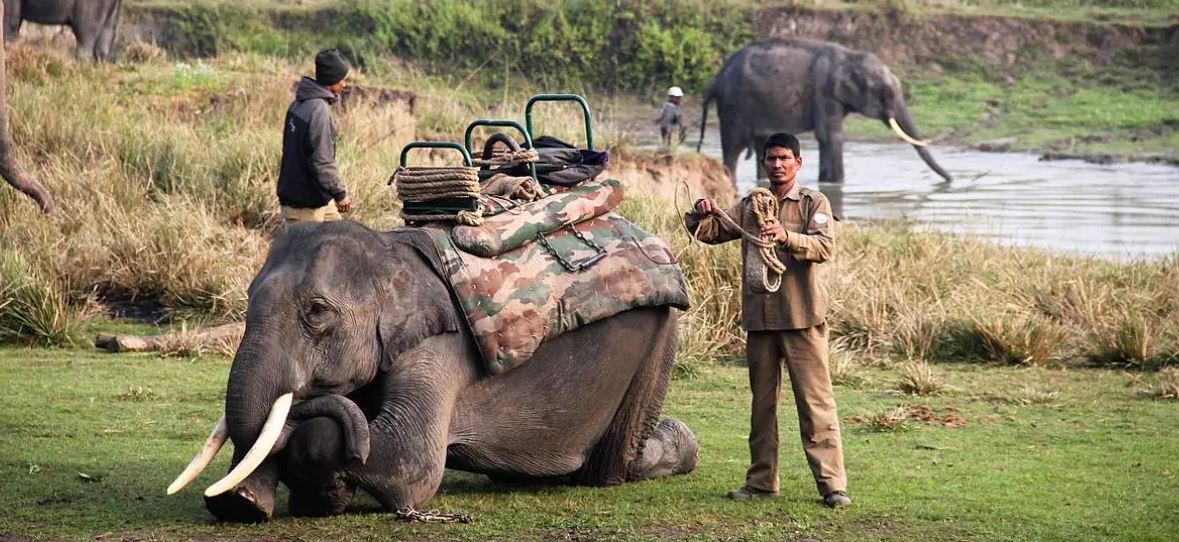
A Detailed Guide to Plan a Safari at Kaziranga National Park
Kaziranga National Park is a UNESCO World Heritage Site and is a sanctuary of extraordinary natural beauty and biodiversity in Assam. Renowned for its population of the majestic Great Indian One-Horned Rhinoceros, this iconic park also boasts a rich array of wildlife, including tigers, elephants, and a multitude of bird species. Planning a trip to Kaziranga can be an exhilarating yet intricate process, as it involves navigating through various logistical details to ensure a seamless and enriching experience. This expert guide is designed to provide you with all the essential information and insider tips to help you craft the perfect Kaziranga National Park safari.

Safaris and the Zones of Kaziranga
- Types of Safaris
Jeep Safari – The jeep safari is the most thrilling activity to undertake in Kaziranga National Park. A maximum of 6 tourists are allowed in a jeep accompanied by a driver and a guide. Jeep safaris are operational from October to May and the safaris are suspended during the monsoon season. Kaziranga jeep safari is carried out in two shifts for around 2 hours. In the morning they operate from 7:30 am – 9:30 am and 9:30 am – 11:30 am. In the late afternoon, they function from 1:30 pm – 3:30 pm and 2:35 pm – 4:35 pm.
Elephant Safari – The Elephant safari in Kaziranga is another enthralling experience to undergo. Riding an elephant and exploring the forest treasures is something tourists should not miss. They are operated in the morning hours, accompanied by a mahout. Elephant safaris are for one hour, from 5:00 am to 6:00 am and 6:00 am to 7:00 am. Elephant safaris are carried out in the Bagori and Kohora range and are also discontinued during the monsoon from June to October.
- Safari Zones
Kohora – The entrance to the central zone of Kaziranga National Park is situated in the village of Kohora. This zone begins at the Mihimukh riding tower, which serves as the starting point for elephant safaris. Tourists who have reserved an elephant safari will embark from this point for a one-hour ride through the central zone. Both jeep safaris and elephant safaris are available in this area, and visitors can experience both by acquiring the necessary permits from the central zone’s tourism office.
Bagori – The entrance to Kaziranga National Park’s western zone is located in Bagori, a key starting point for exploring this section of the park. Here, tourists can embark on both elephant safaris and jeep safaris to immerse themselves in the forest’s natural beauty. Known for its proximity to the one-horned rhinoceros, the western zone is highly favored among visitors seeking an up-close encounter with this magnificent species.
Agaratoli – The entrance to Kaziranga National Park’s eastern zone is found in the small town of Agaratoli, situated along the National Highway. Serving as the starting point for this zone, the Agaratoli tourism office organizes jeep safaris, providing an opportunity to explore the area’s diverse wildlife. Additionally, visitors can enjoy a unique experience with boat safaris within the park, ideal for observing the wildlife around its water bodies. The eastern zone is renowned for its abundance of exotic water birds, offering excellent opportunities for birdwatching through binoculars.
Burapahar – The entry gate to Kaziranga National Park’s Burapahar zone is situated in Ghorakati village. Rhinoland Park serves as the starting point for jeep safaris in this zone. Known for its hilly terrain and stunning natural scenery, the Burapahar tourism zone is highly regarded for birdwatching. Additionally, visitors can trek through designated forest routes, offering an immersive experience of the dense forest and a close connection with nature. Each of these four tourism zones is managed by its respective zone office, where permits for jeep and elephant safaris can be obtained directly from the office counter.
Clothing Tips for Kaziranga Safari
When preparing for a safari in Kaziranga National Park, it’s important to choose clothing that ensures comfort in respect of weather.
- Opt for earthy tones like khaki, olive green, or beige. These colors blend well with the natural surroundings and help you to remain inconspicuous, which is crucial for observing wildlife.
- The weather in Kaziranga can be hot and humid, especially during the day. Wear lightweight and breathable fabrics like cotton or moisture-wicking materials to stay cool and comfortable.
- Long sleeves and pants protect your skin from the sun, insects, and thorny vegetation. They also provide an additional layer of protection against mosquitoes, which are prevalent in the area.
- It is advisable to wear comfortable and durable walking shoes or hiking boots, with closed toes being preferable for protection against insects, thorns, and uneven terrain during jungle walks or treks.
- Don’t forget to bring a wide-brimmed hat and sunglasses to protect yourself from the sun. This will keep you comfortable and protected from sunburn during your safari adventure.
- If you have binoculars or camera equipment, ensure they are easily accessible and protected from dust and moisture. A small backpack or camera bag with a rain cover can be useful.


